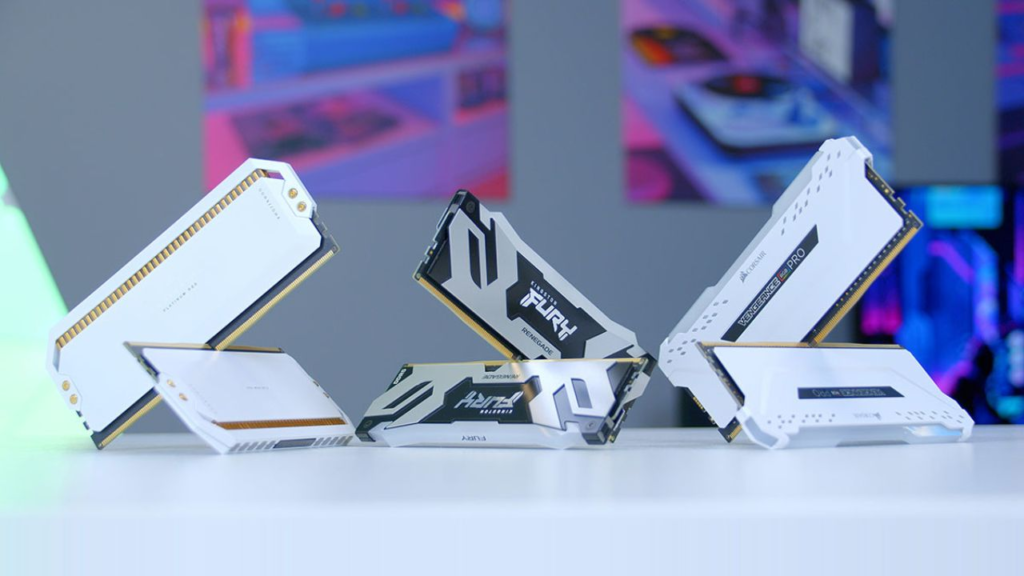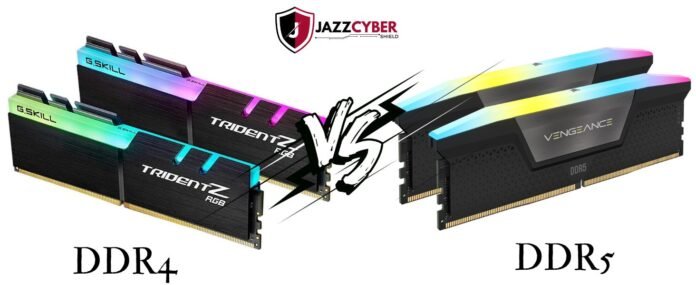In an era of great advancements in computer hardware, memory is essential for enabling system performance. With the introduction of DDR5 RAM, many users debate switching to it or staying with DDR4 RAM. This article discusses the major differences between ddr5 vs ddr4 RAM; comparing and contrasting them with respect to speed, latency, power efficiency, compatibility, and pricing could help you make an informed choice.
1. What is DDR4 and DDR5 RAM?
The new mainstream memory standard from 2014 to our present is DDR4 (Double Data Rate 4). This has many additional advantages like superiority in speed as well as power performance over DDR3.

DDR5, which stands for Double Data Rate 5, is an extension of previous RAM generations and was commercially released into the market in 2021. It is more advanced because it allows for far greater total bandwidth with lower power consumption and higher memory capacity per module.
2. Key Differences: DDR4 vs. DDR5 RAM
| Feature | DDR4 RAM | DDR5 RAM |
|---|---|---|
| Release Year | 2014 | 2021 |
| Base Frequency | 2133 MHz | 4800 MHz |
| Max Frequency (OC) | ~5333 MHz | 8000+ MHz |
| Latency | Lower | Higher (but compensated by speed) |
| Voltage Requirement | 1.2V | 1.1V |
| Max Module Capacity | 32GB | 128GB |
| Bandwidth | 17 GB/s | 38+ GB/s |
| Power Management | Motherboard-controlled | On-module PMIC |
| ECC Support | Limited | In-built error correction |
3. Performance Comparison
Speed and Bandwidth
DDR5 has a lot better clock speeds and bandwidth over DDR4, with the base speed of 4800 MHz by DDR5 over 2133 MHz of that of DDR4. Overclocked DDR5 modules may reach 8000 MHz or even beyond, boosting performance for games, video edits, and artificial intelligence applications.
Latency and Response Time
Increased bandwidth associated with DDR5 compensates for the delay to significantly improve speed in all practical situations, even though DDR5 has higher CAS latencies..
Power Efficiency
DDR5 runs on 1.1 volts as opposed to the 1.2 volts of DDR4, thus it gives better power-saving features and generates less heat, which is perfect for high-performance computers and notebooks.

4. Compatibility and Upgrade Considerations
- DDR4 and DDR5 modules cannot be substituted with each other since the two use various pin configurations and motherboards are built with separate chipsets.
- Thus, DDR5 would require motherboards that are built to support 12th Gen Intel (Alder Lake) and above processors from AMD (7000 series and onwards).
- Most midrange and budget versions of Intel and AMD motherboards currently come with DDR4 support. DDR, therefore, has a lower price tag as compared to the other.
5. Price and Value for Money
DDR5 memory undoubtedly boasts higher performance, although it is also much more expensive than DDR4. Well, with the improvement in technology, the gradual opening of manufacturing, and decreases in price, DDR5 memory will become less out of reach.
| RAM Type | Average Price (16GB Kit) |
| DDR4 (3200 MHz) | $50 – $70 |
| DDR5 (6000 MHz) | $100 – $150 |

6. Which One Should You Choose?
- Select DDR4 under the following circumstances: You are on a budget, your motherboard is from an older generation, or you simply do not need extra speedy memory.
- Select DDR5 if you want forward-looking functionality, a newer CPU and motherboard, or are using high-end applications like gaming, video rendering, or artificial intelligence.
Conclusion
More like DDR5 is going to shine as the best one because of performance, efficiency, and future-proofing, while DDR4 wafts well on budget builds and existing systems. New high-end PC builds must surely go for ddr4 vs ddr5, but using an older system upgrade shows DDR4 still offers the best value.



